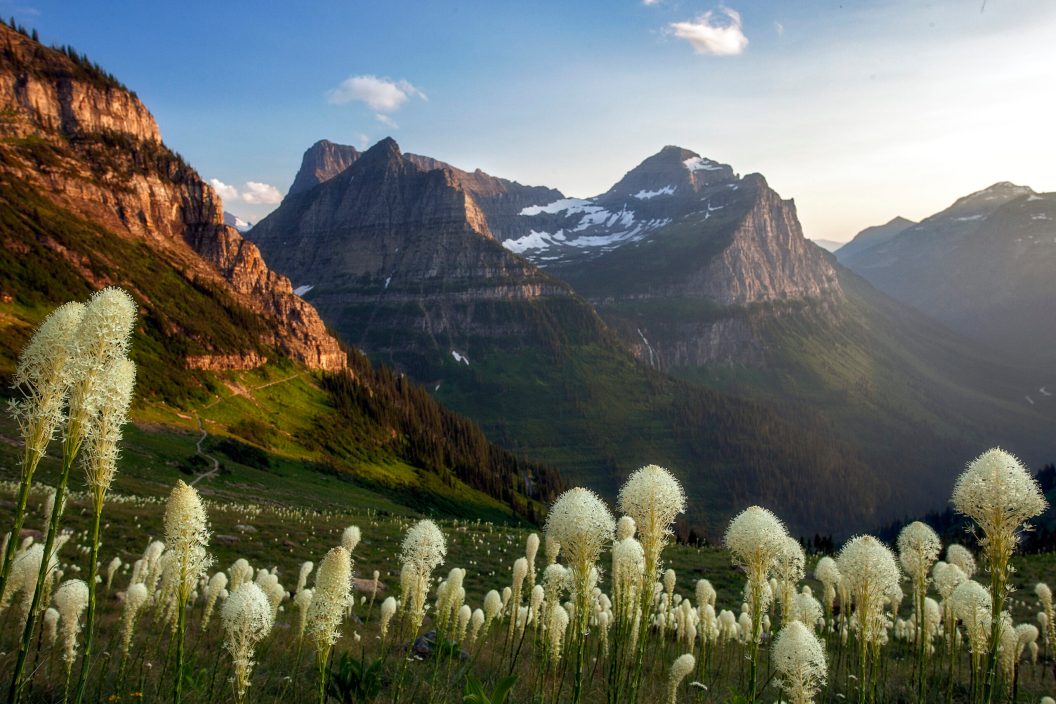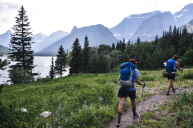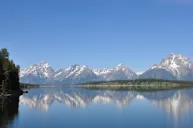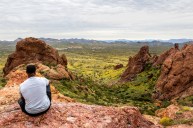Montana's National Parks are full of spectacular scenery, adventure, and plenty of fishing and camping opportunities, all under Big Sky Country. The state's two most prominent National Parks, Yellowstone and Glacier, are etched with lakes, streams, rivers, and an abundance of wide-open space to stretch out under the stars. Montana is an angler's playground, with prime fishing conditions and a variety of gorgeous species to pursue, all against the backdrop of the stunning mountain landscape. The camping in Montana is top-notch, too. Just remember to pack the essentials, follow local regulations, and don't forget the bear spray and insect repellent!
Yellowstone National Park

Yellowstone National Park via Getty Images
Mainly covering Wyoming, Yellowstone National Park also extends into Idaho and Montana. Although most of the park is in Wyoming, most visitors enter the park through one of three entrances in Montana: West, North, or Northeast. These are some of the best spots to hit from Montana entrances to Yellowstone National Park:
- Mammoth Hot Springs: Walk the boardwalks to explore these hydrothermal features or use this area to access some of Yellowstone's best wilderness hiking trails for day hikes.
- Old Faithful: Probably the most famous geyser in Yellowstone National Park — and even the country — Old Faithful, as its name suggests, is one of the most predictable geysers of its kind and provides an excellent show for families. Eruption predictions are available from the park to time your visit, and the Old Faithful Visitor Center is an ideal stop for groups.
Anglers visiting Yellowstone won't be disappointed. Fly fishing is a religion in these parts, as Yellowstone Lake draws thousands of visitors yearly for its native Cutthroat Trout and non-native Lake Trout. Anyone over 16 needs a license, however.
Glacier National Park

Glacier National Park via Getty Images
Glacier National Park lies on the northwestern edge of Montana, well within the ancestral lands of the Blackfeet, Salish, and Kootenai nations. This area is wild and huge-but depending on the time of year, it can be clogged with traffic. Get there before May and after September to beat the crowds.
Dubbed the Crown of the Continent, Glacier National Park encompasses a fantastic 1 million acres in northwest Montana, along with over 26 glaciers and 70 different mammal species. A popular destination for hikers, it features over 700 miles of trails and a variety of scenic sights, including glaciers, carved valleys, alpine meadows, and lakes. These are some of the must-see spots in Glacier National Park:
- Going-to-the-Sun Road: Take this winding scenic drive through the center of Glacier National Park for 50 miles — over approximately 2 hours — for beautiful views throughout. Going-to-the-Sun Road is only open a portion of the year, and a permit is now required during the busy summer months.
- Logan Pass: You can take Going-to-the-Sun Road to Logan Pass, the highest point in the park you can reach by vehicle. You can take in incredible views and jump on popular hiking trails heading to Hidden Lake and the Highline Trail.
- Lake McDonald Valley: The largest lake in Glacier National Park, Lake McDonald is ten miles long with clear blue water and brightly colored rocks. The historic Lake McDonald Lodge sits on the edge.
- Goat Haunt: If you want to get away from all the people in this now top-visited National Park, go to remote Goat Haunt. You'll find some great hiking trails and stunning landscapes in solitude.
- Two Medicine Area: Less busy than other areas in Glacier National Park, Two Medicine offers some good day hikes with fewer people than the most populated park areas.
- Many Glacier: Widely considered one of the most beautiful parts of Glacier National Park, Many Glacier boasts waterfalls, lakes, mountains, and of course, glaciers. There are about 12 hike options in this area alone.
- Waterton Lakes National Park: Just across the Canadian border in Waterton Lakes National Park. Together, the Waterton-Glacier International Peace Park is the world's first joint park of its kind. Take advantage of your trip and hit both parks!
You'll likely spot lots of wildlife — including bighorn sheep, mountain goats, elk, mountain lions, and grizzly bears — during your trip, so practice caution and carry bear spray! The crystal-clear waters of Glacier's lakes feed rivers and streams famous for trout fishing. You can't keep the bull trout you catch, but you also don't need a license to fish in Glacier. You can find more information on fishing in Glacier Park here.
Lodging is available within Glacier National Park, including lodges, motels, hike-in chalets, and wilderness camping (but you'll need a permit). Boat tours, guided hikes, horseback riding, and more are available within Glacier National Park.
Other National Areas in Montana
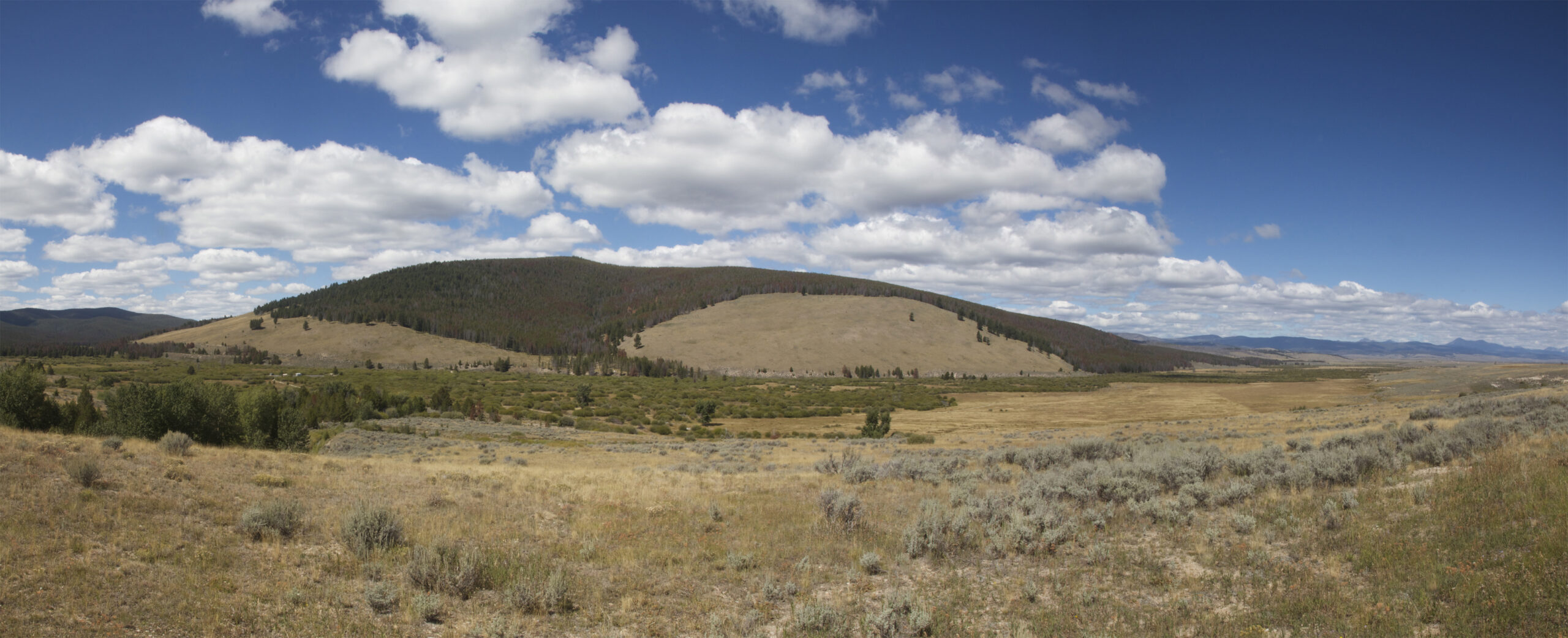
True wide panorama of the Big Hole Battlefield in Montana, part of the Nez Perce National Historic Park, Getty Images
Totaling over 120,000 acres, Bighorn Canyon National Recreation Area comprises two separate districts that aren't directly connected. The South District is located in Lovell, Wyoming, and offers mostly land-based recreation. In Fort Smith, Montana, the North District primarily offers water-based recreation. Here you'll find:
- Yellowtail Dam Visitor Center
- Ok-A-Beh Marina
- Afterbay Reservoir, Boat Launch, and Campgrounds
- Three Mile River Access
Some areas are only open seasonally, so check with the National Park Service before planning your trip.
The Ice Age Floods National Geologic Trail covers about 16,000 miles through modern-day Montana, Idaho, Washington, and Oregon, with exciting sights to see all along the way. You can expect to see dry falls, basalt coulees, high water lines, and giant boulders that moved hundreds of miles years ago. Some scientists believe it all started with Montana's Glacial Lake Missoula, where you can visit along with the Montana Natural History Center, Travelers' Rest State Park, and Fort Owen State Park.
Other National Park Service spots in Montana to add to your list include:
- Big Hole National Battlefield
- Fort Union Trading Post National Historic Site
- Grant-Kohrs Ranch National Historic Site
- Lewis & Clark National Historic Trail
- Little Bighorn Battlefield National Monument
- Nez Perce National Historic Park
